You probably use some form of the technology Ajay Bhatt lead the development of every day; from charging your phone to firing up your latest SparkFun-enabled electronics project, the USB is ubiquitous. However, like most things that are just a part of our tech-driven world today, this wasn't always the case. Join us on a closer look into USB technology and the man who lead the charge!
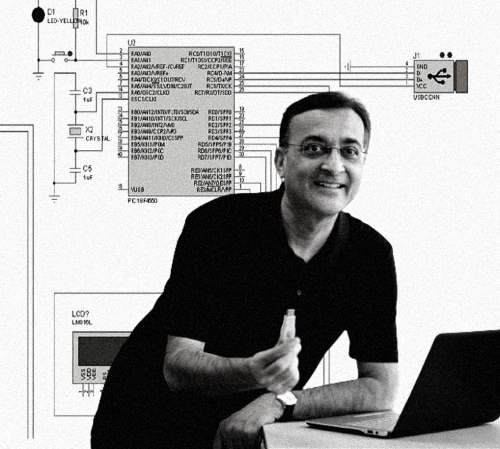
History of USB Technology
Before the development of Universal Serial Bus (USB) technology in the mid-1990s, there were several different types of connectors and interfaces used to connect peripherals to computers. Each type of connector had its own communication protocol, making it difficult to connect different devices to a single computer. Consumers had to purchase and install separate expansion cards to add new interfaces to their systems, which was expensive and complicated. This led to the need for a universal interface that could be used for a wide range of devices, which led to the development of USB technology.
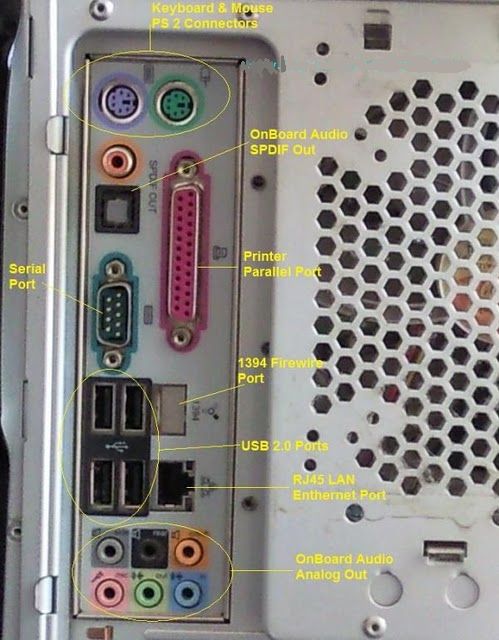
Imagine having a cord for each one of these bad boys in your bag at all times.
The USB was developed by a team of engineers at Intel led by Ajay Bhatt, who says he was inspired to take on the task after having continual issues using a printer. The team wanted to create a single interface that could support a wide range of devices and provide a faster data transfer rate than existing interfaces. They developed the USB as a high-speed serial communication protocol that allowed devices to communicate with each other over a cable. He also wanted the connector to deliver power to the peripheral device, so it wouldn't have to supply it on its own.
Ajay Bhatt introduces his team and discusses the project.
Bhatt and his team began by looking at existing technologies, including serial and parallel ports, but they quickly realized that these solutions were too slow and cumbersome for the modern computing environment. They also examined other emerging technologies, such as FireWire and SCSI, but found that they were too expensive and complicated for most users.
Ultimately, Bhatt and his team settled on a design for the USB that was fast, reliable, and easy to use. They developed a single connector that could be used for many different devices, and they made the USB hot-swappable so that devices could be connected and disconnected from a computer without the need to reboot or shut down the system.
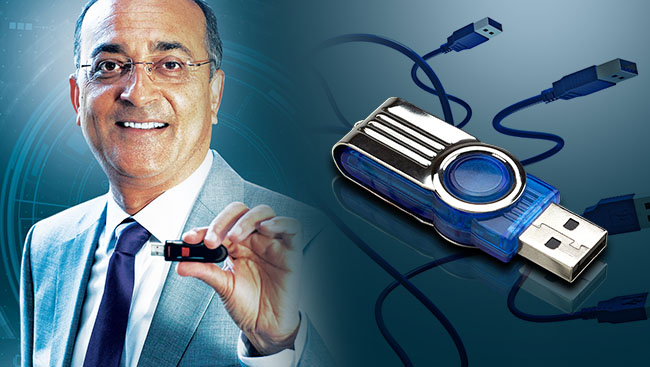
The man, the myth, the legend. Source: Darpan Magazine
Once the design was finalized, Bhatt and his team worked with other technology companies to promote and standardize the USB. They formed a working group called the USB Implementers Forum (USB-IF) to develop the USB specification, which was first introduced in 1996.
The USB specification quickly gained widespread adoption in the technology industry due to its convenience and versatility, and new versions of the standard were introduced over the years to improve data transfer speeds, power management, and other features. Today, the USB is used in a wide range of devices, and it continues to evolve and improve with each new iteration.
When Intel initially developed the USB, it held the patents for the technology, which allowed the company to control the standard and charge licensing fees for its use. However, Intel soon realized that its proprietary approach was not in the best interests of the industry or consumers. The company recognized that the success of the USB depended on its widespread adoption and interoperability with different devices, which would not be possible if licensing fees were required for every use.
In response, Intel took a bold step and transferred ownership of the USB specifications to a non-profit organization called the USB Implementers Forum (USB-IF). The USB-IF is a group of companies that work together to promote and develop the USB standard, with the goal of ensuring that the standard remains open and accessible to all.
Intel's decision to transfer ownership of the USB specifications to the USB-IF was a pivotal moment in the development of the USB standard. It helped to ensure that the USB became a truly universal and open interface, which has had a profound impact on the computer industry and consumers around the world. Today, the USB is used in a wide range of devices, from computers and smartphones to home appliances and automotive systems, and it continues to evolve and improve to meet the needs of an ever-changing technological landscape.
The different types of USB connectors. Source.
Since it first appeared on the scene in 1996, the Universal Serial Bus (USB) has undergone several significant upgrades and evolved to become one of the most commonly used technologies in the world. Here are some of the key ways in which the USB has evolved over the years:
USB 1.0: The first version of the USB, released in 1996, provided data transfer speeds of up to 12 Mbps, which was significantly faster than the parallel and serial ports that were commonly used at the time.
USB 1.1: This updated version of the USB was released in 1998 and provided some improvements to the original standard, including better power management and support for devices like keyboards and mice.
USB 2.0: This version of the USB was released in 2000 and increased data transfer speeds up to 480 Mbps. It also introduced new features like support for external hard drives and improved power management.
USB 3.0: Released in 2008, this version of the USB offered even faster data transfer speeds, up to 5 Gbps. It also introduced new power management features, increased power output for charging devices, and backward compatibility with USB 2.0 devices.
USB Type-C: This is a new type of USB connector that was introduced in 2014. It is smaller than previous connectors, reversible, and capable of supporting a wide range of devices, including laptops, smartphones, and tablets. It also supports faster data transfer speeds and higher power output for charging devices.
USB 3.1: This version of the USB was released in 2013 and increased data transfer speeds up to 10 Gbps. It also introduced new features like improved power delivery and support for multiple data and video streams.
USB 4: The most recent version of the USB, released in 2019, provides even faster data transfer speeds, up to 40 Gbps. It also introduces new features like improved support for video and audio devices and more efficient power management.
Worried the USB is going to go the way of the floppy disk? Do not fear - USB technology is likely to stick around for a long time. The USB standard has been around for over 25 years and has become the de-facto standard for device connection.
It is also worth noting that USB technology has become a critical component of the Internet of Things (IoT) ecosystem, which connects a vast network of devices and systems. As more and more devices become connected to the internet, the demand for a reliable and flexible communication interface like USB is only going to increase.
Who is Ajay Bhatt?
Ajay Bhatt is an Indian-American computer architect who is best known for his work in the development of the Universal Serial Bus while he was working at Intel. Bhatt was born in 1957 in India, where he grew up and completed his undergraduate education in electrical engineering at Maharaja Sayajirao University in Baroda.
He then moved to the United States to pursue a graduate degree at the City University of New York, where he earned a master's degree in electrical engineering in 1981. After completing his graduate studies, Bhatt worked at several companies, including Honeywell and Intel Corporation. It was at Intel where Bhatt made his most significant contributions to the technology industry.
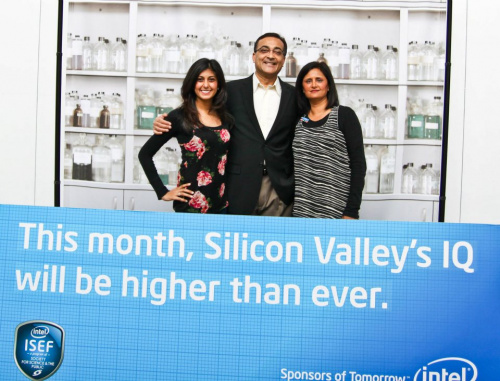
Bhatt with his family at the 2010 Intel Science and Engineering Fair. Source.
By the early 1990s, Bhatt was working as a chief architect at Intel, where he started looking into a new way to connect peripheral devices to computers. At the time, there were many different types of connectors for different devices, which made it difficult for users to connect to and use multiple devices on their computers. His family had a particularly hard time with printing things for school. “Anytime (my family) wanted to do something simple like print a letter for my daughter’s school, I would get a phone call from my wife that she just can’t print it,” Bhatt said. “She does something, but nothing happens to the printer.”
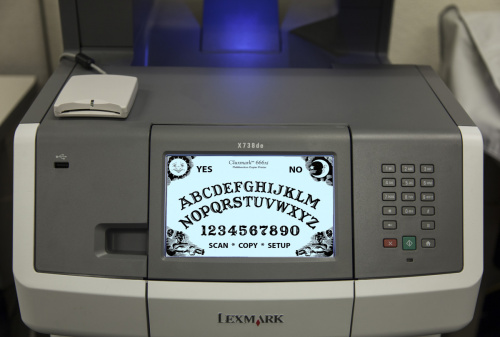
The USB ultimately didn't fix printers, not because it didn't work, but because printers can smell fear and shouldn't be trusted
Not many in the industry shared his dream of a universal connectivity standard. Bhatt's solution was the Universal Serial Bus, and after being shunned by some major players, Intel eventually formed the USB Implementers Forum with Microsoft, DEC, Nortel, Compaq, IBM, and NEC (this is the group that now holds the patent).
An actor's portrayal of him was even featured in an Intel "rock stars" ad back in 2009, because he is that guy.
Bhatt's work on the USB at Intel helped to revolutionize the way that computers and peripheral devices interacted with one another, and it had a profound impact on the technology industry. Bhatt retired from Intel in 2016, but his contributions to the technology industry will continue to be felt for many years to come.
How Does USB Technology Work?
I'm sure you know all about the widespread use of the USB, but do you know how it does business? The Universal Serial Bus is a high-speed serial communication protocol that allows devices to communicate with each other over a cable. The USB protocol includes several layers of abstraction, each of which plays a different role in the communication process.
At the physical layer, the USB uses a differential signaling scheme to transmit data over a pair of wires. This allows for high-speed data transfer while minimizing electromagnetic interference. The USB cable includes four wires: two for data transfer, one for power delivery, and one for ground.
At the data link layer, the USB uses a packet-based protocol to send data between devices. Each USB packet includes a synchronization sequence, a packet identifier, data payload, and a cyclic redundancy check (CRC) code for error detection. The packet-based protocol allows for reliable data transfer over a variety of different devices.
At the transport layer, the USB uses a protocol called the USB Transfer Protocol to manage the transfer of data between devices. The USB Transfer Protocol includes four different types of transfers: Control, Interrupt, Bulk, and Isochronous. Each transfer type is optimized for different types of data and devices.
Finally, at the application layer, the USB uses device class specifications to define how different types of devices should behave and communicate. These device class specifications include things like USB Mass Storage for storage devices, USB Audio for audio devices, and USB Human Interface Device (HID) for input devices like keyboards and mice.
When a USB device is connected to a computer, the USB host controller initiates a process called enumeration, which identifies the device and assigns it a unique address on the USB bus. Once enumeration is complete, the host and device can communicate using the USB protocol; a complex and highly optimized system that allows for high-speed data transfer and reliable communication between a wide range of devices.
USB at SparkFun
Looking to spice up your USB collection? Do I have good news for you. We've got 'em all, including our fan favorite 4-in-1 cables.
There's also plenty of places on our site to learn more about USBs and connectivity. Check out this tutorial to start, it discusses all things connectors.
Connector Basics
January 18, 2013
Connectors are a major source of confusion for people just beginning electronics. The number of different options, terms, and names of connectors can make selecting one, or finding the one you need, daunting. This article will help you get a jump on the world of connectors.
We also have a USB Buying Guide, but please note it hasn't yet been updated with new USB-C information.
May is Asian American and Pacific Islander Heritage Month, and it's a great opportunity to highlight contributions from Asian American and Pacific Islander engineers, scientists and innovators to the world of science and the electronics industry. Ajay Bhatt and scientists like him have changed the world with their work, and we want to recognize them.
Which AAPI scientists and engineers inspire you? Let us know in the comments below, or find us on Twitter, Instagram, Facebook or LinkedIn.



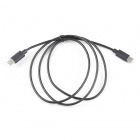
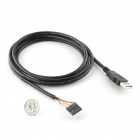



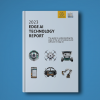
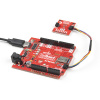






Absolutely great article! The picture of all the plugs and ports on the back of the PC, with the question "Imagine having a cord for each of these..." Wait, some of us service industrial applications where legacy PCs are still in use, so we still have many of these cords in our bag! We don't have to imagine it, we tote it around daily. Sparkfun even helps out with adapter cords and cables, one of the ways I found myself here.
Seriously, great article. Love history lessons, they aid in understanding where we are now. Even kept most of the politics out of this, how USB came to rule the roost thru the novel idea of dropping the licensing fees, transferring ownership of the tech to non-profit, etc.
Another great article by [Redacted]! Thanks for putting a name and face to the person I blame for all my cables! Seriously, I remember using the old cables for printers and serial devices - what an evolution to today’s USB cables. Thanks for the trip down memory lane!!